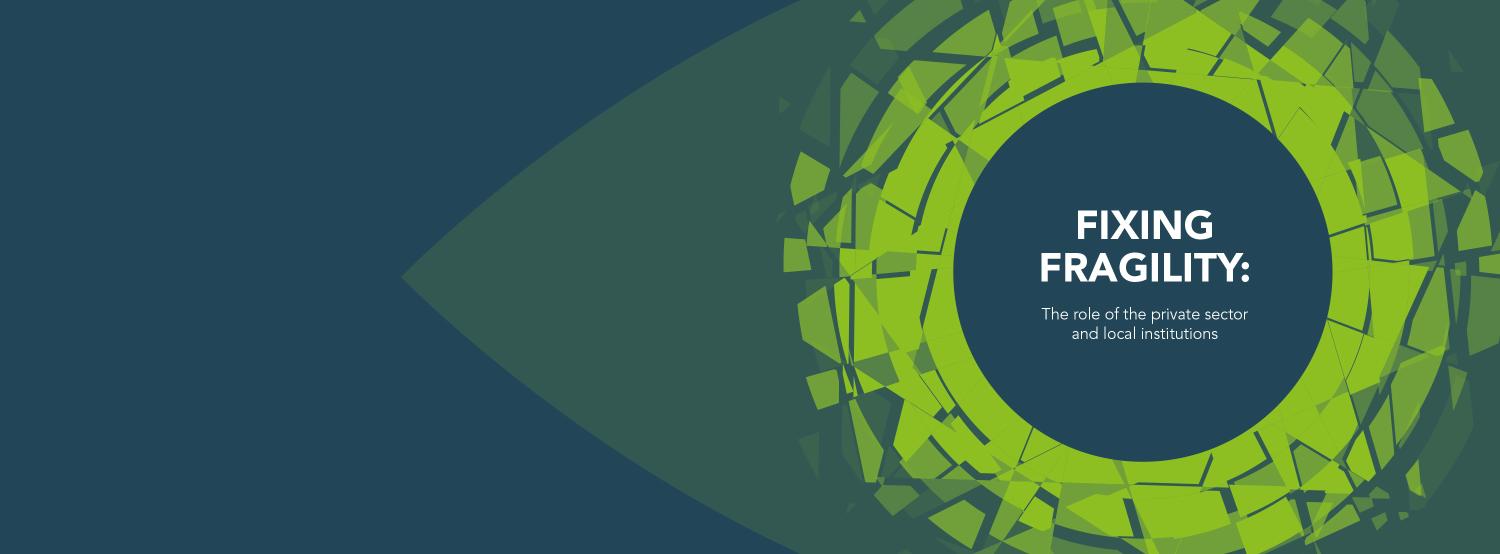The future of development aid is in helping the least successful countries to catch up with the rest of mankind. India, Indonesia, Brazil, and most other developing countries are broadly on track to catch up, but a minority of countries are not. The Report of the Commission on State Fragility, Growth and Development, codirected by Tim Besley and myself, issued in April 2018 as Escaping the Fragility Trap, was highly critical of international policies. That Somaliland, debarred from all assistance by the anomaly of nonrecognition, has outperformed Somalia should concentrate minds: A reset of policies is long overdue.
The report argues that fragility is a syndrome of characteristics: fractured identities, a lack of state legitimacy and capacity, insecurity, a dearth of formal enterprises, and proneness to shocks. These reinforce each other, creating a trap. That fragility is a syndrome challenges both the conventional diagnosis of a “root cause” (typically some presumed past injustice) and the conventional “solution,” which starts from some future vision of an OECD-style society and deduces an agenda from the differences between that vision and current reality. Foreign troops keep the peace; an election “solves” the legitimacy problem; and in return for aid, the new government “agrees” to a donor wish list of reforms. This approach denies the condition from which the society starts. Foreign troops rapidly become intrusive; an election further divides the society rather than solving the lack of legitimacy; an ambitious reform package cannot be implemented by a state with little capacity. The society is hit by adverse shocks before anything has time to work.
Our alternative approach emphasizes the importance of national sovereignty, and pivotal moments of opportunities. As to sovereignty, states, not foreign entities, must manifestly be in charge of public policy: They must not be bullied or bribed into a policy agenda in which they do not believe. Such attempts turn governance into theater, in which governments sign up for undertakings that they have neither the capacity nor the intention to deliver. Cumulatively, the resulting failures have deepened the problem. If states and their intentions are fundamental to successful change, in many fragile situations for long periods there will be little that the international community can realistically do. This must be recognized: The alternative is repeated failures deepening despair. But precisely because such states are fragile, crises and changes of leadership periodically create pivotal moments when change is possible. International support needs to be sufficiently quick that it can seize on such moments. Not all can be well identified, but the cost of missing an infrequent opportunity is likely to be far higher that intervening in situations that turn out to be unpromising.
The future of development assistance is to use public money to offset the costs and risks of firms that pioneer new activities in poor and fragile societies.
During a pivotal moment, the international community should support, but not set, policies. Citizens must recognize without ambiguity that the government is choosing its course of action without undue external influence. Our suggestion to such governments is to adopt a twopronged approach. The first prong is a series of step-by-step changes that are simple to do and result in quick, visible improvements: This gradually builds confidence and practical legitimacy. The second prong is a medium-term agenda that is highly focused on strengthening the process by which jobs are generated: Productive jobs will gradually stabilize the society and enable living standards to catch up. This process of job generation depends on the private sector of the economy, as fragile states need many more formal firms. But firms need the services provided by the key sinews of the state: security, infrastructure, the rule of law, and effective checks and balances on abuse of power. Since they each cost money, they all rest on the state’s capacity to tax. Hence, strengthening these five sinews of the state constitutes the priority both for government and for donor support.
Catalyzing firms in conditions of fragility is intrinsically difficult because domestic firms typically remain informal to hide from government and consequently cannot reap economies of scale and specialization. Foreign firms see few opportunities and are fearful of their reputation, especially as business-hostile nongovernmental organizations patrol like sharks. The public institutions that can be most helpful in attracting proper firms to places where they are sorely needed are the development finance institutions since, by design, they are the interface between development assistance and business. The future of development assistance is to use public money to offset the costs and risks of firms that pioneer new activities in poor and fragile societies. The $30 billion Bangladeshi garment industry, which has transformed the lives and status of young women, was ignited by a pioneer foreign firm that was imitated by local entrepreneurs. The benefits of pioneer firms can be huge, but they themselves do not capture the gains and so there are far too few of them. The use of aid to bring firms to where they are most needed is starting to happen. For example, the World Bank Group, the United States, and the United Kingdom are all scaling up, reforming, or putting into action their respective development finance organizations.
International discourse on state fragility is steeped in high-sounding pious moralization. In the language of my 2007 book The Bottom Billion, the conversation has been dominated by the headless heart. Yet the problem of the continued fragility of many of the poorest countries, and their resulting divergence from the rest of mankind, is too serious for such responses. Alongside warm hearts, we need cool heads.
The Brookings Institution is committed to quality, independence, and impact.
We are supported by a diverse array of funders. In line with our values and policies, each Brookings publication represents the sole views of its author(s).




